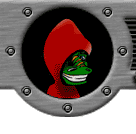Dissenting Student
Technique: In the middle school and high school age student, the
dissenter may be verbalizing a struggle for self recognition and clarifying
of principles and ideals. Though this may feel a little unsettling or
intimidating, it is important to assist students to take positions, to
defend ideas and to question.
Procedures: In some cases the student is dissenting through poor
motivation. Attention seeking, power struggles or grandstanding for peer
approval are addressed elsewhere.
The student who is clarifying principles and ideals deserves to be taken
seriously, It may be important to review acceptable ways of debating an
issue or arguing a point. Certainly others‚ ideas must also be honored
and valued and dissenting viewpoints can be expressed earnestly yet tactfully.
We are striving for individuals who are becoming educated and who are
able to stand for themselves and by themselves in a healthy manner. We
want to be certain that we recognize the phenomenological nature of perception
and that we have structures that permit, even avidly promote and value
insight, thinking, knowing.
Teaching in the higher grades can be much like normal human development,
spiraling upward, dialectical, two and three dimensional with consideration
of ideas on a continuum rather than black and white, the book answer‚
or wrong. Thus, the great teacher trains the student for mastery of medium
and facts and revels in the resulting creativity. One carefully balances
the classroom format between individual need and the teaching of socialization.
The teacher espouses discipline and provides structure, that the student
may learn self discipline. To expect and demand one answer and decry divergence
is to paint a teacher into the box called machine‚ and color the graphics
of life in black and white.
Teacher:
- Reframe those who speak up and disagree as thinkers and value what
you have accomplished.
- Teach students to respect others in the classroom who might suffer
from too much stimulation and who may not be ready to question by observing
others‚ need for closure along with their need for disclosure.
- Establish a time and place for questioning and try the Dialogist
Role in the classroom, preparing all students for Socratic discussion.
- Agree on a nonverbal cue to let dissenting students know that the
debate has exceeded your personal comfort zone or is becoming
overzealous and uncomfortable for others in the setting.

Student:
- Increase communication skills and ability to clarify and check messages
to be certain of the meaning and nuances of messages.
- Understand the process of resolving conflict and work on ability
to negotiate and compromise.
Once you
have completed this topic you should:
Go back to Techniques
|


















